Note: This article was originally published in 1985. The botanical science discussed has evolved since then, and certainly since the events during which the story takes place. It is presented here as a history.
###
When one reaches, almost, the ripe old age of 80, and if one is still lucky enough to have one’s mental faculties, still more or less intact, and if said person has a knowledge of certain things that may be of interest to others, then I believe that said knowledge should be shared. So here goes.
My father. Lee Harris was a native-born Humboldter. He was born and raised in the Rio Dell area, where his father, James Harris, homesteaded in the early 1850s.
Lumber was his life. Dad started in the woods as a chopper. He worked up to position of superintendent for the factory at Pacific Lumber Co., Scotia. He held this position until he retired in 1942.
Although my Dad was an avid sportsman, enjoying the hunting and fishing that abounded in those days, his main love of the outdoors was the flowers. He was a self-taught botanist and, from the time I was big enough to follow him around the hills on hunting and fishing trips, he tried to instill in me that love of nature that he so dearly embraced.
My constant companion on these trips was the Handbook of California Wild Flowers. If the fish wouldn’t bite, I could always find a wild flower or weed to try and classify. My Dad also insisted that I learn the Latin names, as well as the common, but I imagine my pronunciation left much to be desired.
From an interest in all wild flowers. Dad finally focused his attention on wild lilies. He made such an extensive study of them that he was considered an expert. Such noted botanists as Dr. Jepson, from University of California, Luther Burbank, Emanual Fritz, Dr. Vollmer and others came to see Dad and his lily garden, and to consult him as to growth and location of certain lilies.
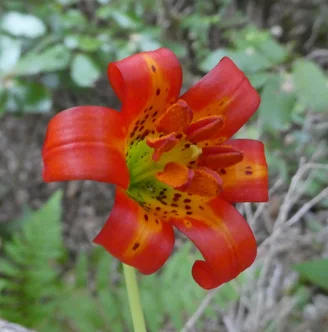
Lilium maritimum. Photo: Zoya Akulova-Barlow, via Calflora. CC-BY-NC 4.0 license.
When Dad and I first started working to establish a lily garden in Scotia we planned on having only the native lilies of the three northern counties. We started in Mendocino County, which has only one native lily. What I mean by “native” is that although other species of lilies may be found in that county, there is only one distinct type lily found in that county and no place else. Such is the Merritianum (mer-it-e-um). This is a nasturtium red bell shaped lily with a yellow throat that grows just south of Fort Bragg, along the coast. It is never found more than a mile inland from the ocean. It is odorless.
Humboldt County has nine distinct native lilies. We will start with the most common, the Pardalinum lily, commonly called the Tiger lily. It is found along the banks of the South Fork of the Eel River, along Mattole River and in many places near running water.
The Pardalinum lily grows to a height of four to five feet, has many flowers to the stem, an orange-red bloom with curved petals, and numerous black or purple dots. It has no odor. It has a scale type bulb.
Liliium pardalium. Photo: zapoteca, via Calflora. CC-BY-NC 4.0 license
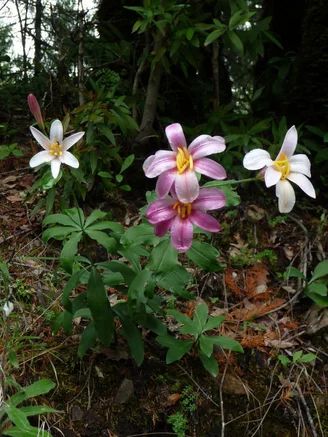
Lilium rubescens. Photo: Larry Nichols, via Calflora. CC-BY-NC 4.0 license.
Along the high dry ridges throughout the county and through the Redwoods, especially near Miranda and Weott, you may run across a fairly tall lily with a cluster of white fragrant flowers. This lily is Rubescent. or Rubescens. As the flower ages, the white petals take on a ruby color to deep purple. It is also faintly speckled with black dots. This lily is commonly called the Redwood or Ruby lily.
Between Carlotta and Bridgeville grows one of the most beautiful lilies of all. This lily greatly resembles the Pardalinum but the flowers are much larger and the petals a more vivid red. The plant grows from five to six feet, with one or two to over a dozen flowers to the stem. It is highly freckled but has no odor.
There has been much controversy about this lily. Burbank claimed it was one of his hybrids that he called the Sunset lily. Tigard Lily Farms in Tigard, Oregon, also claimed it as a hybrid they had crossed. The American Lily Association sent an expert to examine the lily. My father was able to show the expert the lily growing in its natural habitat. It was later decided by the Lily Association that this was definitely a wild lily and not a hybrid. They then honored my Dad by naming it the Harrisii Lily (hare-is-e-ii). The ‘64 floods practically made this lily extinct.
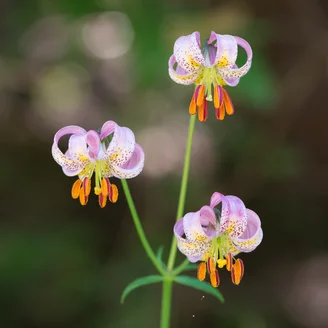
Lilium kelloggii. Photo: Steve Conger, via Calflora. CC-BY-NC 4.0 license.
If you ever drive down Kneeland Road and catch a whiff of an elusive perfume, park your car and start looking. This lily, the Kelloggii, is the perkiest, sauciest, most lovable of all the lilies. At least I think so. It grows from one to four feet high and can have from four or five to sometimes fifty flowers on one stem. The petals curve back from a deep yellow throat, with the cutest black freckles and faint red stripes down the petal. The petals are white but as they age. they take on a ruby tint.
They seem to be such a happy little flower, as they dance in the breeze and give off the most heavenly perfume. I defy anyone to spend a few minutes on a warm July day. on a quiet hillside, surrounded by a group of Kelloggii Lilies, wrapped in their special scent, as a gentle breeze sings through the tree tops -the only sound is the song of a bird and the buzz of a bee - then say, ‘God is Dead.’ Don’t you believe it.
Lilium occidentale. Photo: Jeff Bisbee, via Calflora. CC-BY-NC 4.0 license.
Another small, dainty lily, and one that is unique in coloring, is the Occidentallii (ox-i-den-tally). This lily does not grow tall. About six to eight inches is average, although a few do get higher when they have heavy brush to combat. At one time this lily grew in profusion around Eureka, south of Harris before it was settled, around Buhne Point before it was leveled to build the nuclear plant.
Due to building and expansion it is now mostly extinct. In 1942 I found one growing near Union and Henderson, but now that area is a playground. I do know of one patch near Table Bluff Lighthouse where a few were waging a losing battle to livestock and brush. I scattered seeds and replanted many scales and hope they are still surviving. The Occidentallii is unique, with its throat a bright green and yellow color. The bright red tipped petals curve backward. It is lightly freckled and has no odor.
Lilium columbianum. Photo: Mary Ann Machi, via Calflora. CC-BY-NC 4.0 license.
Along Highway 101 north from Trinidad you will no doubt run across the Columbianums; there are two distinct types, the red and yellow. Each has curved petals, faint markings and a clear either red or yellow color. At one time there were many of both species in the Fieldbrook area, but due to settlement and livestock they are slowly being wiped out; The heavy brush along the coast is another hardship they have to contend with.
If you ever decide to make a lily garden and want to plant a Columbianum I would advise you to have a full- sized vocabulary of four letter words handy, for they pick the biggest huckleberry and azalea bush they can find, then they tuck their bulb about six inches under all the roots and defy you to dig them out.
Lilium pardalinum ssp. vollmeri. Photo: Mary Ann Machi, via Calflora. CC-BY-NC 4.0 license.
Throughout the mountains of Humboldt County, you will sometimes be lucky enough to find a bog. Sometimes they cover about an acre and sometimes they cover several acres. During the winter and spring they turn into full sized lakes but with the summer become semi dry. From the oozing muck and water will appear a clear yellow lily. This is called the Vollmerii. It was named for Dr. Mike Vollmer, a noted lily expert, as well as a prominent obstetrician and gynecologist from San Francisco.
Like the Vollmerii, the Lilium Humboldtii likes a wet shady place. If you find a large spring on a shady hillside with a nice boggy seep there you will find the Humboldtii. The Vollmerii and Humboldtii both have rhizomonus bulbs.
This is as good a place as any to give you some very good advice. If you decide to plant a lily garden, please, when you dig a bulb with scales, remove several outer scales and replant them. If the bulb is rhizomatous, remove the more mature bulblets, which cluster like grains of rice, to the main clump. Replant them. It is well to spot and mark your lilies when they are blooming during the summer, then in the fall, when you go back to dig the bulb, gather as many seed pods as you can, or as many as the deer decide to leave you. If you wish to start a seed bed, remember it takes five or six years of tender loving care to nurture one little seed to maturity.
Scatter as much seed as you can in places that are well protected. It even pays to scatter some loose dirt over the seeds. This will discourage the birds, rodents and squirrels who all feel that those seeds were put there for them alone. Remember this rule of thumb - when you take one thing for yourself, at least plant three for posterity. Thus you will propagate and perpetuate.
Lilium washingtonianum. Photo: Donna Wildearth, via Calflora. CC-BY-NC 4.0 license.
Far up on the hot barren hillsides near Snow Camp is found the lily Washingtonianum Major. This a pure white lily with loose curved petals. The flowers are fragrant and usually larger than most lilies. Like most white lilies it too turns a ruby color with age. It is lightly freckled, although I have found them without markings.
We have now covered the nine native lilies of Humboldt County.
Lilium bolanderi. Photo: Anna Sereno, via Calflora. CC-BY-NC 4.0 license.
Del Norte County has one native lily, the Bollanderii. This is a small claret, rose-colored flower, with a chartreuse green throat and upright leaves that do not curl back. It lacks odor and only grows about four to six inches high. It is found on hot rocky hillsides on Wagon Wheel Road and on the ridges they are now mining, so it too may be extinct before long.
It is strange that the native Humboldt lilies may be found in the other two counties but the two natives of Del Norte and Mendocino are never found in Humboldt.
When our lily garden in Scotia was complete, it was a beautiful sight as Dad tried to establish a habitat as near what their own was in the wilds. Representatives from all the lily societies and botanists from several universities were constant visitors. Kew Gardens in England asked to exchange bulbs and seeds, so it wasn’t long before we also had lilies from all over the world.
There was a lily presumed to be extinct, but hints of its existence kept trickling back, so Kew Gardens sent an expedition into Tibet to run the rumors down. After many hardships, the expedition was set upon by hostile tribes. One Englishman and his bearer escaped and made it into Burma. There, the Englishman later died of fever. Months later his effects were received by Kew Gardens and among them were seeds and four lily bulbs. Whether they were the extinct lily from Tibet or a lily from Burma was not known.
Not wanting to chance planting them all in one place, one bulb was sent to the arboretum in Washington D.C, one to Kew Gardens, one to another noted lily grower and one to Dad. Well, Dad’s bulb grew and it was beautiful. It had about a seven-inch trumpet-shaped lily, white with pale green stripes down each petal. It also had an odor but not one you would call pleasant. This bulb also had an infestation of some kind of bug like a nematode. It promptly infested every bulb in the garden.
We tried every known method to get rid of our Burma Bug as we called it. Nothing worked. I worked in the hospital at that time, so took some of the bugs to the lab. I tried every known poison we had. They got fat on them. I tried ether. It never even put them to sleep. I tried alcohol and they didn’t even get drunk. I finally got mad and lit a match to the alcohol. It worked. Yes, we dug and burned every bulb in our lily garden. Talk about heartbreak!
About that time, the second World War broke out. Dad retired from Pacific Lumber and moved with us to our ranch at Freshwater.
Kew Gardens had a fabulous collection of books on all the lilies of the world. There were about 50 pages to a book, and about eight books in all. On one side of a page was the origin of the lily, its founder, a description of the parts of the bulb and flower, its habitat, soil and drainage. On the corresponding page was a full-size, hand painted picture of the lily in its natural color, all painted on parchment. Each book was about three feet by three feet and you can imagine what they were worth. They were heavily insured by Lloyd’s of London. It would have been impossible to replace them. The heavy bombings and fighting going on in other nations had already wiped out many lily gardens and collections.
Kew Gardens decided that the last place anyone would drop a bomb would be Freshwater. After they had several near misses with bombs at Kew Gardens, they decided to send the books to us. How they crossed from England to Canada, through Canada, then down to Freshwater, I’ll never know. I would have liked to have had a candid camera the day these two veddy, veddy, correct Englishmen showed up on my doorstep with a half million dollars worth of books. I was running the tractor and manure spreader and had been pitching and spreading for a couple of hours, and I didn’t smell like a lily, that’s for sure.
Well, I crawled off the tractor to see what the two dudes wanted. They introduced themselves as couriers from Lloyd’s of London and asked to see my credentials. I pulled off my smelly boots, invited them in, showed them my driver’s license and birth certificate and said, “Just slide the books under my bed.” I thought they would burst into tears but they finally slid them under the bed and there they stayed until after the war was over.
I did remove a couple of books and took them to the Eureka Women’s Club. I was program chairman for the Garden section and I think I gave them quite a spiel on lilies. I did not tell them I had six more books home under my bed. I was just a little cautious about talking about them for it was bad enough sleeping over a half million dollars worth of stuff. I didn’t lose much sleep over them, but didn’t want to start having to worry about them during the day.
When the war ended, two more couriers from Lloyd’s showed up and, with a sigh of relief, slid the books from under my bed and thankfully carted them back to England.
Leota Ness and her father, Lee Harris, when Leota was a year old.
I would like to present this little story of the native Humboldt lilies to the Historical Society, as a memorial to my father. Lee Harris, a self-taught and much-loved botanist.
Should the society know of any university, college or high school students studying botany, and should they be interested in writing a thesis on wild native lilies of Humboldt, I think it would be a fine project. Some are practically extinct now and in the near future more may be pushed out of existence unless someone can prove they are an endangered species. I would like to see their history preserved.
Although I do not get around as well as I did fifty years ago, I am still in pretty good shape and feel that I could either direct or lead some necessary field trips.
###
The story above was originally printed in the March-April 1985 issue of The Humboldt Historian, a journal of the Humboldt County Historical Society, and is reprinted here with permission. The Humboldt County Historical Society is a nonprofit organization devoted to archiving, preserving and sharing Humboldt County’s rich history. You can become a member and receive a year’s worth of new issues of The Humboldt Historian at this link.

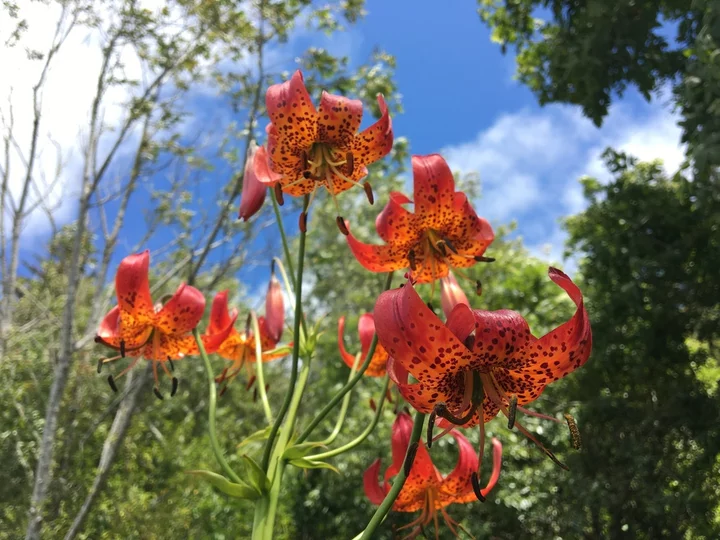

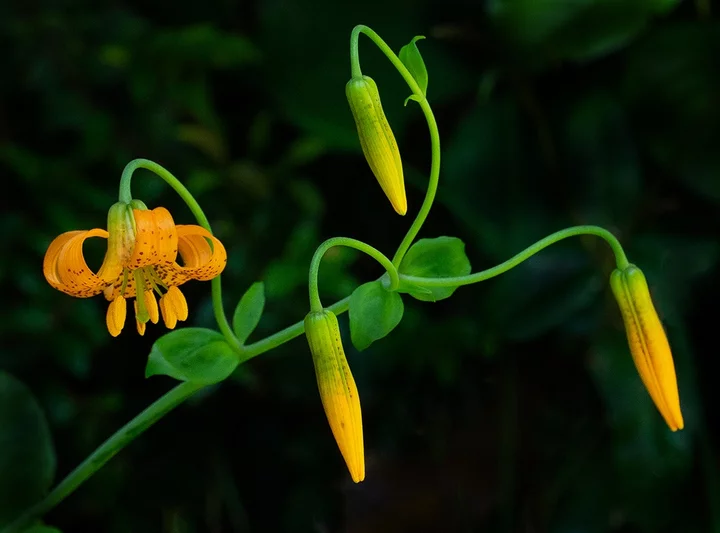
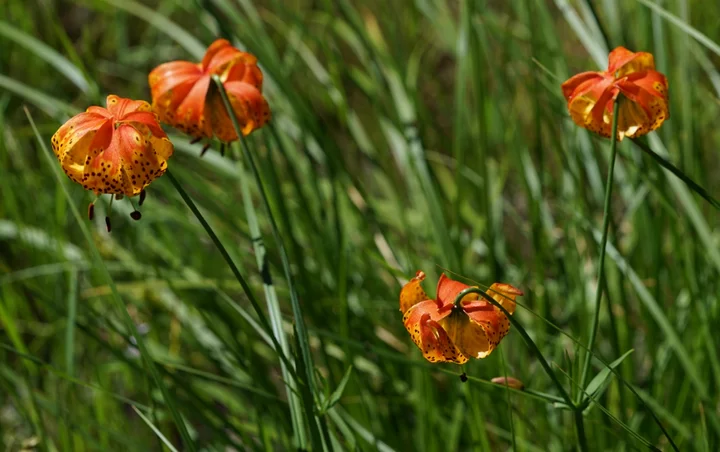

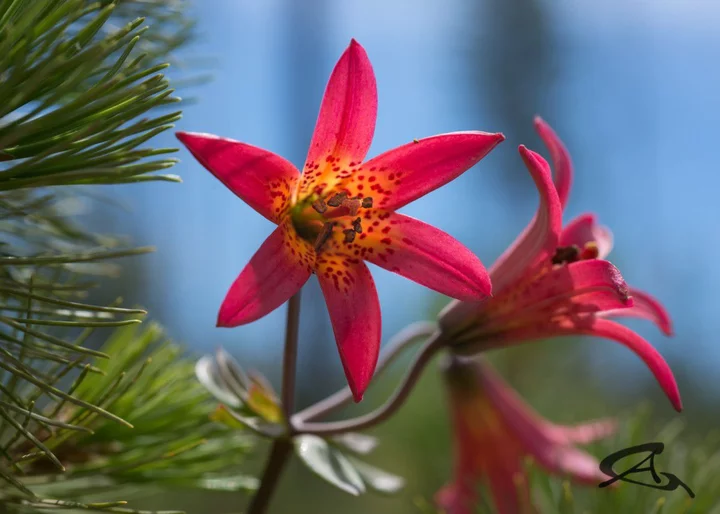

CLICK TO MANAGE